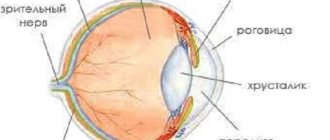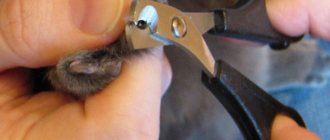7044Administration
Veterinarians recommend sterilizing cats between the ages of eight months and one year, since surgery performed before puberty threatens the animal’s health with complications. Few owners decide to take an older kitten to the doctor, especially if obvious signs of puberty do not appear. However, sooner or later nature will make itself felt, and then the owner will be faced with the question of whether it is possible to castrate an adult cat.
Pros and cons of castration
global $ads_google; //data-ad-slot=”2475549904″ $ads_google = empty($ads_google) ? false : true; ?> if ($ads_google == false) {?>
$ads_google = true; ?> } ?>
Often the reason for castration of a cat is not only his urgent demand to continue his family, but also an active desire to mark territory. To prevent the furry friend from causing such problems, an operation is performed.
This leads to obvious advantages of the procedure:
- there is no reason to mark territory;
- no excessive aggression;
- absence of loud demands from the cat;
- reducing the risk of genitourinary diseases;
- increasing lifespan.
We must not forget about the disadvantages :
- It is possible that a cat with loss of gonads acquires an increased appetite. This can lead to obesity and health problems;
- perhaps due to changes in hormonal balance, a decrease in the activity of the animal, which is also fraught with obesity;
- when performing surgery on adults or elderly males, sometimes difficulties arise with the functioning of the cardiovascular system;
- if castration was carried out at the wrong time, then not only the testes, but also the pituitary gland take over the production of sex hormones: the operation becomes useless, and all the “cute” manifestations of the mating season continue.
But if the animal is healthy, the cat is castrated at the appropriate time, and the owners strictly monitor the pet’s balanced diet, the disadvantages do not manifest themselves.
Advantages and disadvantages
Castration has its pros and cons. The following arguments can be given in favor of the operation:
- the animal will be in a constant state of stress if the desire to mate is not satisfied;
- there is nothing good about taking birth control and hormonal pills throughout your pet’s life;
- there is a high risk of acquiring various diseases when a cat is sexually active;
- the animal will stop marking its territory after a few months;
- Fights between cats can injure, undermine health and even shorten the life of the animal. A neutered pet will not participate in fights, as it will be absolutely not interesting to him;
- such animals become very affectionate, flexible and easy to train;
When to castrate a cat
To answer the question about the appropriate time for castration, you need to understand when the organs and systems of the body complete their formation.
This happens at about one year, but physiologically the cat becomes sexually mature at six months. Therefore, 6 months is the earliest time to castrate a cat.
.
If the operation is performed before six months, then there is a high probability that the cat will develop urolithiasis (this is especially true for Persians, Himalayan cats, British cats and Scottish Fold breeds), because the urethra is not fully formed. The testes of some males at this age may still not be in place, and this is a significant problem for surgical castration.
You don’t have to wait long: the procedure performed at the age of 7-9 months is easier and more successful.
In any case, a preliminary consultation at a veterinary clinic is required.
Animal age
It is recommended that surgery be performed between 7 and 10 months of age. At this time, the first signs of sexual heat appear, and the body has already formed. If castration is too early, the risk of obesity increases, the animal becomes very lethargic, which increases the likelihood of developing urolithiasis.
Surgery at a later date becomes more dangerous. Some veterinarians refuse to operate on cats older than 7 years , as they do not tolerate anesthesia well, and surgical wounds take a long time to heal, and there is a risk of developing postoperative infections. However, if the cat’s behavior leaves no choice, then the operation can be performed, since all these dangers are not high enough.
Types of castration
Surgical and non-surgical methods are used.
Surgical methods:
- Open method - the scrotum is greatly stretched and an incision is made. The testis is removed, the vaginal membrane is freed from it using scissors. The spermatic cord is removed and tied to itself. The same is done with the second testis, after which they are removed.
- With the closed method, the tunica vaginalis is not opened, but only an incision is made to remove the testis and the tunica vaginalis from the scrotum. A ligature is applied to the spermatic cord and cut off. The skin of the scrotum is not sutured.
- The bloodless method or castration without removing the testicles consists of squeezing the spermatic cords with special forceps, after which, after 5 months, they are reabsorbed.
- Vasectomy is a gentle method of sterilization: the seminiferous tubules are partially destroyed, which serves as an obstacle to sperm entering the penis. The testes continue their work, and the cat continues to demand a female, but cannot continue the race.
Non-surgical methods do not involve removing the testicles. This includes chemical castration in the form of injections, tablets or the introduction of a Suprelorin implant.
Preparing a cat for castration
Careful preparation of the animal is mandatory: the success of the operation largely depends on this. If you ignore the veterinarian’s instructions, you may experience health complications and, as a result, additional financial losses.
It is important to follow a strict diet, as anesthesia can cause a gag reflex. The male is not fed for 10-12 hours before the start of the procedure, which will prevent vomit from entering the respiratory tract. Water is not given 4-6 hours before surgery.
global $ads_google; //data-ad-slot=”2475549904″ $ads_google = empty($ads_google) ? false : true; ?> if ($ads_google == false) {?>
$ads_google = true; ?> } ?>
The cat should not have any diseases or health problems that could be a contraindication to castration.
A week before the operation, the cat is dewormed, and the day before it is washed with zoo shampoo.
Preoperative fasting
Due to the fact that cat castration surgery involves general anesthesia, the owner should deprive the cats of food for the last 12 hours. It should be recalled that for carnivores, which include all cats, fasting for 1-2 days is normal and does not harm their health.
Fasting concerns only food, there is no need to exclude water. The reasons for “forbidden” and why you cannot feed the cat lie in the fact that vomiting may occur during the operation. If the animal's stomach is not empty, it may choke on its own vomit.
Castrate a cat at home
Like spaying a cat, neutering can be done at home.
The arriving veterinarian does an examination and, in case of problems, gives answers to all questions. If there are no contraindications, the cat is given anesthesia. After it comes into force, the operation begins and lasts up to 20 minutes.
Then the animal comes out of anesthesia, and the veterinarian once again advises the owners about possible difficulties and gives recommendations for caring for the cat after the operation.
Will the cat survive such an operation?
People often hesitate to castrate an old cat because of the risk of complications. In practice, negative consequences rarely occur. Volunteers castrate and neuter homeless animals en masse. Veterinarians do not know the exact age of street cats. In most cases, operations proceed without complications. Stray animals are released immediately after they recover from anesthesia.
Pets are under the supervision of their owners, live in comfortable conditions, and eat well. They experience complications even less frequently than homeless people. However, this only applies to cases where there are no contraindications for surgery and the cat itself is healthy.
Anesthesia is dangerous in castration. An adult pet tolerates and comes out of it well. Older cats may have problems. Therefore, after anesthesia, it is recommended that old pets be given IVs. This way, they will recover from anesthesia faster, and the load on the heart, liver and kidneys will decrease.
With proper anesthesia and following the veterinarian’s recommendations, all cats, including adults and elderly, can withstand castration.
Caring for a cat after castration
How long does it take for a cat to recover from anesthesia? Depends on what kind of drug was used. In any case, you need to monitor the cat’s behavior after castration : the animal will experience stress, so you will definitely need to show it affection and attention. A cat who is restless after neutering will feel more confident if the owner holds him on his lap, pets him and talks to him.
After the anesthesia wears off, the cat can sleep for several hours. The awakened animal is usually weakened and disoriented. If a cat shows aggression against this background, then it is quite capable of causing injury to itself and its owner. It is important to be nearby at this moment and calm the pet. This behavior may be associated with dizziness and nausea.
Anesthesia has a depressing effect on thermoregulation processes in the body, so the operated cat is placed in a warm place away from drafts.
Immediately after the pet gets up, it will rush to look for water, so the bowl with it should stand next to the rookery.
The toilet should be within the animal's access area after anesthesia.
If during the operation the cat was not given saline solution or an “artificial tear” drug, then dryness on the cornea will be eliminated by lacrimation.
The wound will need to be treated: if dirt appears, they are removed with a damp cotton pad and treated with an antiseptic. It would be better to put an Elizabethan collar on the cat's neck - it will not allow the animal to damage the seams. After 4-5 days the device is no longer required.
In just a few days the cat will return to normal and recover.
Feeding castrated cats
After castration, very little time should pass, the pet’s body will be rebuilt, and the character of the furry friend will become softer. He will be less and less drawn to street walks, but his appetite may increase noticeably.
To prevent a once powerful healthy cat from turning into a fluffy dumpling of particularly large sizes, it will be necessary to reduce the total calorie intake by 25-30%.
Food for neutered cats does not include fish dishes, and it is better to avoid dry non-specialized food altogether. Fried, salty, fatty foods are not recommended.
An excellent healthy food would be porridge and boiled lean meat. There is a ready-made balanced food for neutered cats.
Symptoms requiring special attention
If more than two days have passed after the castration operation, and your cat is trying to go to the toilet to no avail or is meowing loudly while urinating, you should definitely show the animal to a veterinarian.
If traces of blood are detected in an animal’s urine, you need to find out the cause of what is happening. It is possible that blood and ichor are still leaking from the healing wound; this may happen at first. But if bleeding is accompanied by blue mucous membranes, fainting and weakness of the animal, immediately contact a veterinarian.
Below are the symptoms, if detected, you must urgently contact the doctor who performed the castration. Describe in detail the pet’s condition, signs that are disturbing it, to take further action:
- increased body temperature;
- stiff gait resulting from discomfort in the perineal area;
- lethargy, refusal to eat for several days;
- painful stomach;
- difficulty urinating;
- purulent discharge from the wound.
Most complications occur in the first 2-3 days after surgery. If nothing terrible happened during this period, then, as a rule, no problems will arise in the future.
If a cat marks after castration
global $ads_google; //data-ad-slot=”2475549904″ $ads_google = empty($ads_google) ? false : true; ?> if ($ads_google == false) {?>
$ads_google = true; ?> } ?>
This question arises periodically, and there is only one recommendation: find the reason for the tagging.
In the event of such an incident, the animal is brought for examination to a specialist, since the examination may reveal a poorly performed operation, or the cat turned out to be cryptorchid and its testicles are not in the abdominal cavity.
The solution to the problem may be a repeat operation - the testes need to be removed, as they produce sex hormones.
Another reason for leaving an unpleasant smell in the apartment from marks is the cat’s banal bad manners; here you will need to study tips on how to wean a cat from marking its territory.
There are animal psychologists who can help desperate owners cope with their cat’s desire to mark.
Recovery after surgery
Caring for a pet after surgery does not require much effort on the part of the owner. The main thing that a cat should receive at this difficult moment is care and attention. During the first hours after surgery, it is important to check the animal’s pulse rate and breathing clarity. If interruptions in the functioning of the respiratory or cardiovascular systems are detected, it is necessary to urgently contact a specialist.
It is completely natural for your pet to sleep for a long time after surgery.
Such complications are not that common, and in most cases the cat simply falls asleep for an extended period of time to regain strength. Be prepared for the cat to be unstable, clumsy and sleepy for the next 12-15 hours. Sometimes such symptoms appear a day after the operation - it all depends on the individual immune response.
Sleeping area
Think about a sleeping place for the cat in advance. It is important that it is out of reach of drafts, radiators and sharp corners that the cat can easily stumble upon when waking up. It is optimal to place the cat on a soft bedding or mattress.
If your pet has a tendency to stick out his tongue, be careful not to bite it.
It is not recommended to put a cat on the floor. Firstly, the floor may be cold, and the owner is unlikely to want to deal with hypothermia of the pet’s already injured skin. Secondly, prolonged sleep leads to numbness in the limbs; on a hard floor, the likelihood of numerous edemas only increases.
To avoid poor circulation, carefully shift your pet from side to side every half hour. This will help him avoid painful swelling as he wakes up.
The cat may overestimate his condition and go to conquer the nightstands
Make sure that the cat does not encroach on the conquest of indoor heights. When recovering from anesthesia, the pet still does not measure its strength and does not determine the distance between objects well. In this state, any jump can result in injury. If possible, spend time next to the cat - pet it, talk to it in a smooth, soft voice. At the same time, you should not pick up the animal - the slightest careless movement can catch the wound and cause an attack of pain.
Tray
The tray must be placed next to the pet, since in the first hours after sterilization he may not have enough strength to reach its previous location. If the cat makes mistakes and goes to the toilet where it shouldn’t, do not scold him under any circumstances. Remember that all the cat’s energy goes into recovery; unnecessary stress will only worsen his well-being.
Making it easier for your cat to access the litter box will increase the likelihood that he won't miss it.
Important! The tray should not contain wood, mineral or other fillers, since they may contain an infection that, if it gets into an open wound, will lead to illness in a weakened body.
Licking the wound
Many cats begin to diligently lick the wound, as they do in all other cases. Getting an animal's saliva into a healing incision is extremely undesirable, as it can lead to infection. In addition, constant irritation of the cut skin can slow down the healing process.
The collar will help pacify your pet's curiosity about the healing incision.
For particularly persistent cats, wearing an Elizabethan collar would be an excellent solution. Cats will benefit from bandages (blankets) specially designed for such situations. Probably, at first such “clothes” will cause a protest reaction among pets, but this forced measure will not torment the animals for long. Once the incision has healed, the animals will be able to get rid of the annoying materials.
How much does it cost to cast a cat?
Each veterinary clinic sets its own prices for surgical or non-surgical intervention in the animal’s body for the purpose of castration.
The average price for castration of cats is 2,000 rubles, but this amount does not always include anesthesia, examination-consultation, hospital, and post-operative care. Accordingly, the price increases depending on the clinic.
Castrating a cryptorchid cat will be more expensive: cats with testes in the subcutaneous tissue cost about 2500-3500 rubles, and if the testes are located in the abdominal cavity, 3100-4500 rubles.
Take care of the health of your cats, and they will remain your faithful friends for many years.











